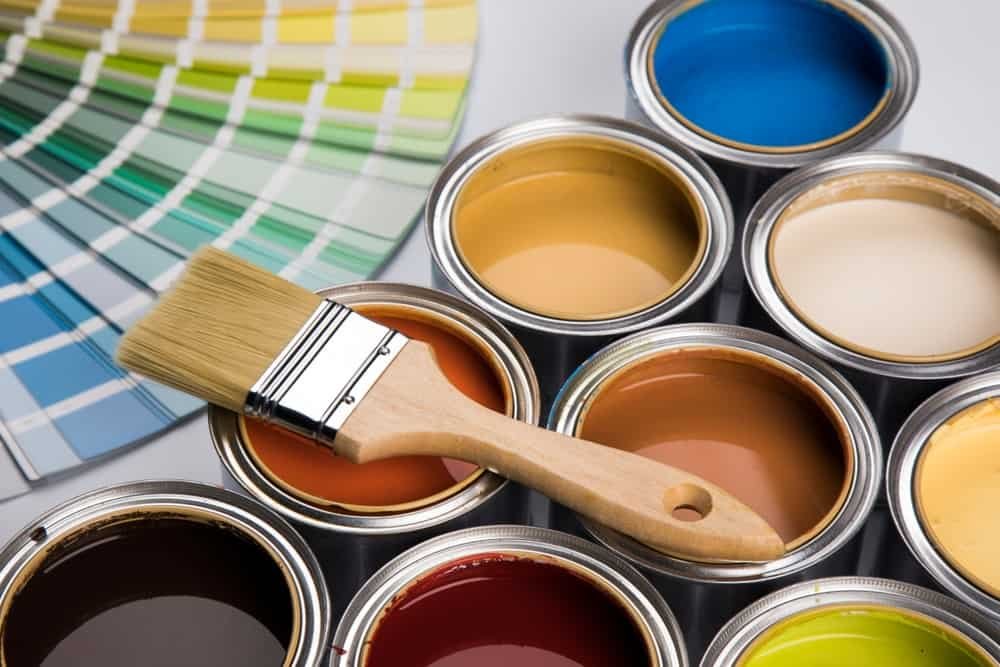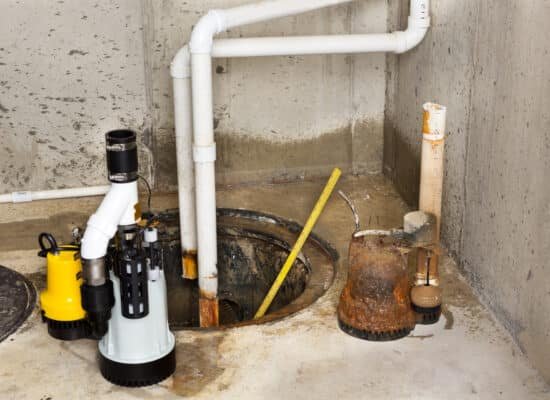Tiled floors can add an aura of elegance and finesse to any living space. High-traffic areas like hallways, bathrooms, kitchens, or even living rooms benefit the most from tile flooring. But tiles can cost a pretty penny, and they are prone to wear and tear a lot.
Table Of Content
- What Kind of Paint to Use on the Floor Tiles?
- Is it OK to paint floor tile?
- When is a good idea to paint floor tiles?
- 5 Best Floor Paint Options for Floor Tiles
- Chalk paint
- Latex paint
- Oil-based paint
- What is the best way to paint floor tiles?
- Scuff the surface
- Clean the Tiles Thoroughly
- Painting the Grout
- Why painted floor tiles can work?
- A Cost-Effective Makeover
- How to Paint a Tile Floor?
- How to Select Paint for Ceramic Floor Tile?
- Choosing Ideal Locations for Tile Painting Based on Humidity
- Things to Consider When Painting Floor Tiles
- Steps for Painting Ceramic Tiles Safely and Effectively
- Sealing and Finishing Painted Tile Floors
- Painting Tile Floors Pros and Cons
When floor tiles turn ugly due to constant use, they become dull or dry. That’s when you should think about paying attention to your floor tiles. But what are your options?
What Kind of Paint to Use on the Floor Tiles?
Most people find it confusing to decide how to deal with the situation. Many choose to replace old tiles with new ones. But ripping out existing flooring has its fair share of downsides. The main one is that the process could be costly. A better alternative is to paint floor tile yourself or hire a professional for the job.
If you are crafty enough to employ a DIY approach to painting floor tiles, go for it. Painting floor tile is a cost-effective and more accessible option than replacing them, and I am wondering how you do that. Here’s a comprehensive guide on whether to paint or not to paint floor tiles.
Is it OK to paint floor tile?
The shortest possible answer would be Yes; It is OK to paint floor tile!
Floor tiles take a lot of wear and tear regularly. While it may not be a great solution that could provide lasting results, painting floor tile is a cheaper and more convenient way to cover up old floor tiles. You can paint them yourself in your preferred design and color. But, you’ll need to use the right kind of paint as not every paint is suitable for floor tiles.
Moreover, you have to follow the proper procedure if you want the best results. It is important to note that a job poorly done can affect the resulting quality as the paint will come off soon after contacting water.
Many homeowners want to know whether it is OK to paint different kinds of tiles. For your information, you can paint all types of floor tiles and even wall tiles. The only thing to remember is the process of painting.
When is a good idea to paint floor tiles?
There are several reasons to repaint your old floor tiles, such as the following:
- You are on a budget and cannot spend a lot to paint floor tiles.
- You don’t like the current look and color of your floor tiles.
- You wish to add a personal touch to your floor tiles to match them with the rest of the home/room décor.
There is some growth on your floor tiles, such as mold, which gives them an ugly look.

5 Best Floor Paint Options for Floor Tiles
Before starting to paint floor tile, it is crucial to determine what type of paint will work best for you. Three types of colors work best for painting floor tiles.
Chalk paint
It is easier to apply as you don’t need a primer before applying the paint. It also lends a solid color to the tile and can serve as a base coat if you want a patterned finish. If you’re going to use it as a base coat, opt for a shade that visually contrasts with the pattern color you intend to overlay.
Latex paint
It works best on both patterned and solid tile floors. If you choose to use latex paint, select either high-gloss or semi-gloss paint for solid tiles. For patterned tiles, go for high-gloss latex paint.
Oil-based paint
That’s another great option if you want to paint floor tile. Oil-based paint is less prone to damage and chipping. However, it takes a little bit longer to dry compared to other colors. Moreover, oil-based paints are harder to find in the market these days because of the environmental concerns that they entail. Still, if you choose to use oil-based paint, select either semi-gloss or high-gloss paint to get the perfect look.
Please note that oil-based and latex paints adhere best to primed tiles. Therefore, you need to apply urethane or epoxy bonding primer using a roller or brush before painting the tile.
What is the best way to paint floor tiles?
Here is a detailed overview of how to perfectly paint floor tiles.
Scuff the surface
Before starting to paint floor tile, you need to scuff the surface sufficiently to prepare it for painting. Using a fine grit, at least 400 grit or higher sandpaper, start de-glossing the tile. Your aim should be to slightly remove the gloss rather than ultimately chipping the base material. Do not remove the shine entirely:
Just make sure to scuff until the tile doesn’t appear shiny. You should start the process with scraping to allow the paint to adhere to the tile better. If the surface is polished and glossy, it won’t stick as well and will soon come off.
Clean the Tiles Thoroughly
Floor tiles are installed in areas that receive a lot of food splatter, dirt, and debris. And if it is the kitchen or bathroom, the tiles will receive many soap and scum. Therefore, before starting to paint your floor tiles, it is essential to clean them thoroughly to remove any dirt or external material traces.
If the tiles are too dirty, you should clean them before sanding once and then again after sanding. Another option is using a pressure wash to prepare the tiles for painting.

Painting the Grout
It is impossible to avoid painting the tile grout. Masking it won’t be easy, and if you don’t do it, the look will not be as clean as you expect it to. However, do not paint any flexible areas, such as silicone seams or caulking.
Why painted floor tiles can work?
Painted floor tiles can work if you aren’t looking for a long-term solution to change the look of your old and weary floor tiles. Tiled flooring is usually found in high-traffic areas like the kitchen or bathroom.
There’s always the risk that paint will bubble up or peel when exposed to moisture or when tiles are used roughly. Painting the tiles is an easy process that provides immediate results without making you break the bank.
Tile painting is a short-term remedy to address the situation. It will eventually wear down. That’s a given. But it won’t wear down quickly. So you can easily use the floor for 1 to 6 years without worrying about repainting or replacing them.
A Cost-Effective Makeover
It is also an inexpensive way to freshen up floor tiles in the short term until you can afford to replace existing tiles with new ones. Technically, there won’t be as much difference in the appearance between painted and replaced floor tiles.
So, you won’t need to compromise on the appearance factor at all if you choose to paint floor tiles instead of replacing them with new ones.
The most important thing is finding the right color and paint after examining the tiles you have. Moreover, covering darker tiles with a lighter shade will be a costly affair as the paint will be expensive; otherwise, you won’t get sufficient coverage.
If you want a seamless look all around without spending much on the paint itself, opt for black or grey, as this is a timeless look that goes well with all themes.
How to Paint a Tile Floor?
If you want to employ a DIY approach to paint floor tiles, it is essential to properly paint them to avoid cracks and chips in the future. Here’s a thorough guide to painting floor tiles, which works best for all kinds of rooms, from bathrooms to kitchens and other high-traffic areas.
Step #1- Using a mop, brush, scrub, and tile cleaner, scuff the entire floor thoroughly.
Step #2- Sand down all the tiles to roughen up the surface and prepare it for the paint.
Step #3- You will require a well-ventilated area to let the paint dry out quickly. So open any doors and windows that are in the room. Or else, turn on the fans to ensure maximum ventilation and minimal humidity.
Step #4- Start preparing your floor tile painting materials.
Step #5- Mask edges using painter’s tape.
Step #6- Start applying the primer before formally painting them. This step is essential to smoothen up the surface so that the paint adheres well without any cracks or bubbles. Apply the primer to the grout and tiles all over. Let it dry out completely before starting to paint.
Step #7- Start applying the paint in smooth strokes. You may need to coat it several times to cover the tiles neatly and perfectly. If using a stencil, spray the tiles with paint using a spray gun to get the job done effectively.
After the first coat has dried, reapply the second coat may take one or more days. Allow it to dry completely.
Step #8- The final step is applying a sealant or polyurethane on the painted and dried tiles. Again, this will be a 2-3 coats process, and after each coat, allow the tiles to dry in between.
How to Select Paint for Ceramic Floor Tile?
On ceramic floor tile, you cannot select just any paint. Use a color that’s not water-based because ceramic tiles are usually installed in bathrooms or kitchens where there is always a lot more humidity and moisture. If you use water-based paint, it will quickly disintegrate in the bathroom.
The ideal option is choosing a water-resistant, anti-bacterial epoxy paint. Mostly, these paints are available in a limited range of colors, such as you may find them in white, black, or grey. You can also opt for a prepackaged tile painting kit for ceramic tiles that include all the suppler you will need to paint floor tile.
Choosing Ideal Locations for Tile Painting Based on Humidity
Although you can apply any paint to ceramic tiles, it may not hold up as well under all conditions. A better solution is to paint in the drier areas of your house.
If you opt to paint tile floors in highly humid or moist areas, choose a section that’s far from the splash zone as it will be prone to mildew. Spaces, where a bathtub or shower is installed should be avoided or select a paint created exclusively for bathroom floor tiles.

Things to Consider When Painting Floor Tiles
The aim should be to achieve a pristine finish. So, it would help if you started with an undamaged and smooth tile, which can be achieved through sanding and vacuuming. Then get rid of all the mold, dirt, and grime using a scrubber. Clean the grout lines using a homemade solution of equal parts warm water and bleach.
Or else, you can clean the tiles with a commercial cleaner. Pay attention to mold and mildew buildup and clean those areas thoroughly.
Steps for Painting Ceramic Tiles Safely and Effectively
Don’t forget to use protective gear and ensure proper ventilation in the room before starting to paint. If there are any visible chips or cracks in the tile, repair them with caulk. Alternatively, you can use a two-part epoxy.
If you want to paint the entire floor, using a roller or brush would be a good idea. It will help you apply paint over a larger area and grout in continuous motion. If you want to paint random tiles and not the whole floor:
- Start by cutting in along the edges of one tile using an angled brush.
- Roll the paint over or use a brush to apply it over the rest of the tile.
- Use unidirectional strokes while painting, and repeat the process for all the tiles you want to paint.
If you find it challenging to spread the paint over the tiles, mix a small amount of paint thinner to make it easier for you to apply it.
Sealing and Finishing Painted Tile Floors
For a solid-colored paint design on the floor tile, allow the paint at least three days to dry and then seal it with two to three coats of a water-based urethane sealer. Please don’t use an oil-based sealer as it gives a yellowish tint to the paint.
You can, however, use any clear sealer. Allow the first coat to dry out thoroughly before applying a fresh coat.
To cover and spruce up the grout lines, paint them with grout paint after removing the masking tape.
Before using the sealant for patterned tile floors, let the tile dry for three days, and once the pattern has dried, then apply the sealant.

Painting Tile Floors Pros and Cons
Painting tile floors’ pros and cons could be highly subjective as it depends on the circumstances you are dealing with. However, there are some universal pros and cons associated when you paint floor tile.
Pros:
- A cheaper option than replacing old tiles.
- You can select from a variety of shades as per your interior décor.
- You can use a DIY approach to paint floor tiles.
- It is possible to customize the look of tiles the way you want.
- It quickly gives old and ugly tiles a refined and trendy look.
- Painted tiles can withstand regular wear and tear as reliably as store-bought tiles.
- Less time and money are required to paint your floor tiles.
Cons:
- It can take up to a week to complete the paint job as you need to dry them thoroughly before every coat.
- If you do it incorrectly, the paint may peel or chip after a few days.
- It’s quite an undertaking as you have to design, do prep work, and paint it all by yourself.
- Painting floor times is not a long-term solution.
- In high-footfall areas, paint usually starts chipping and peeling quickly.











